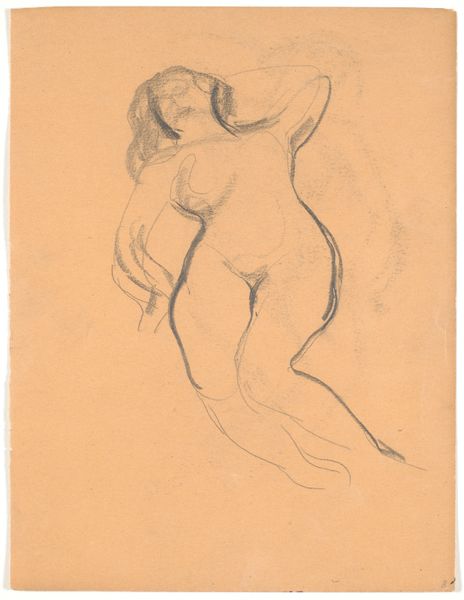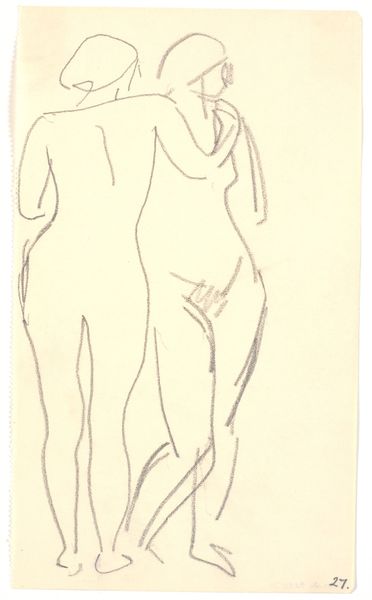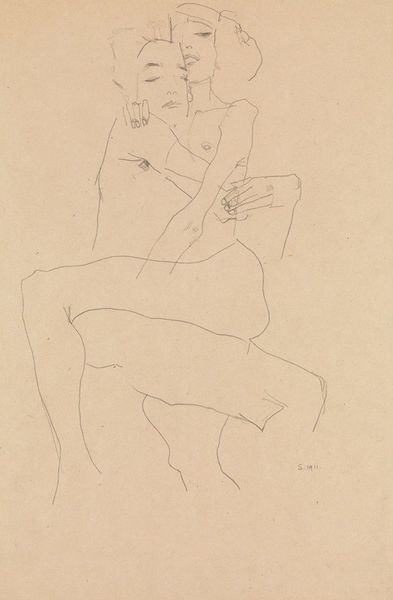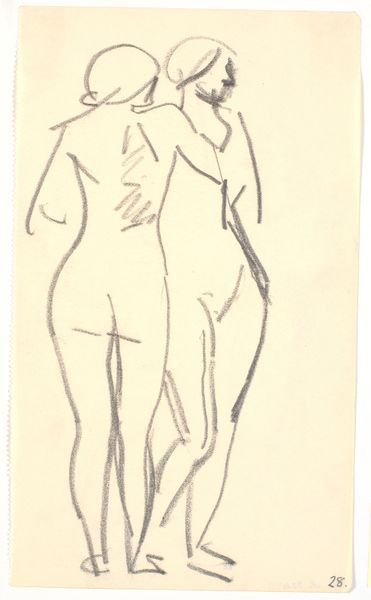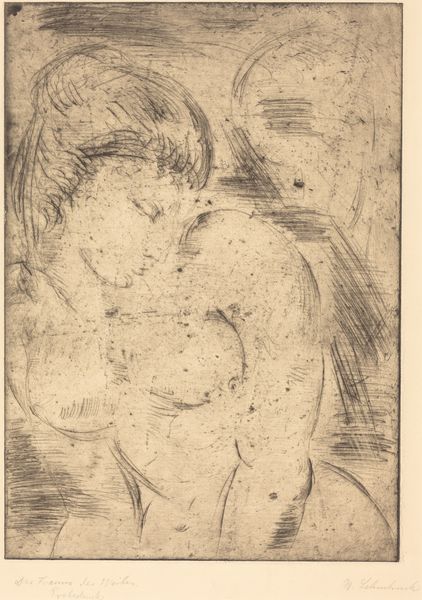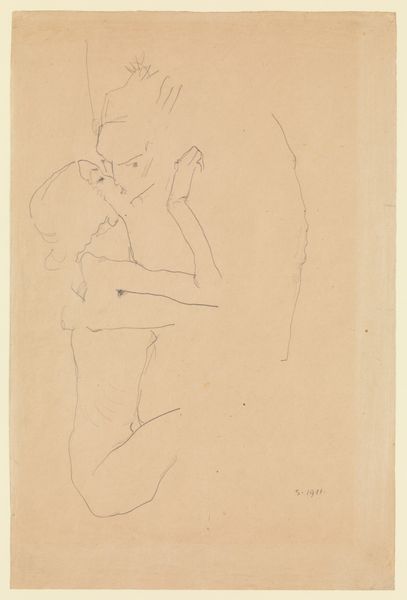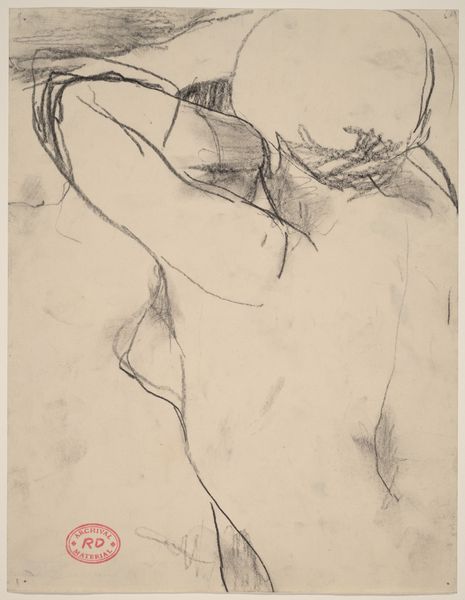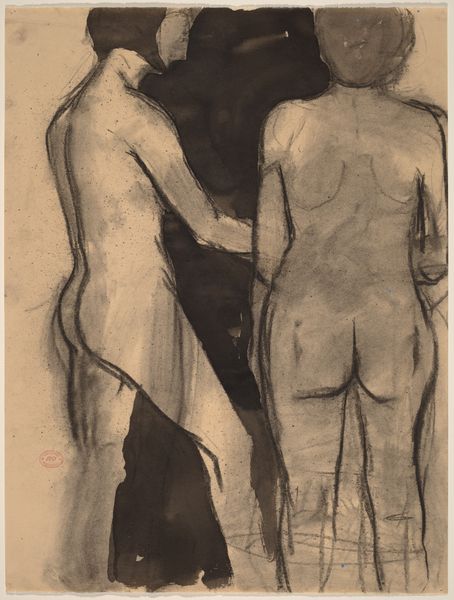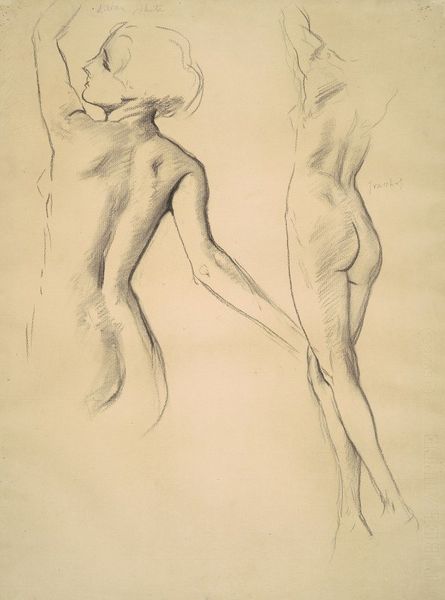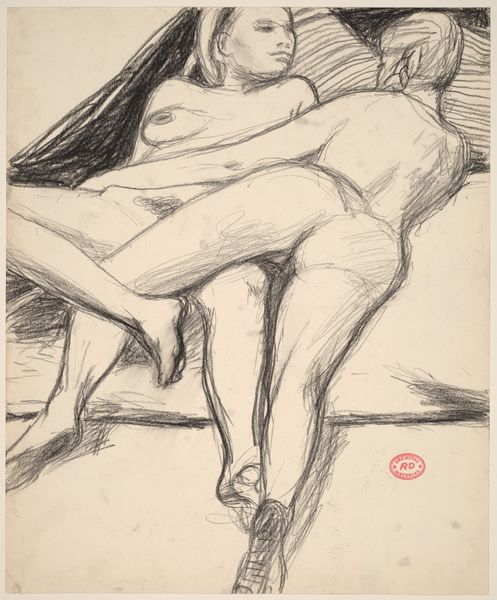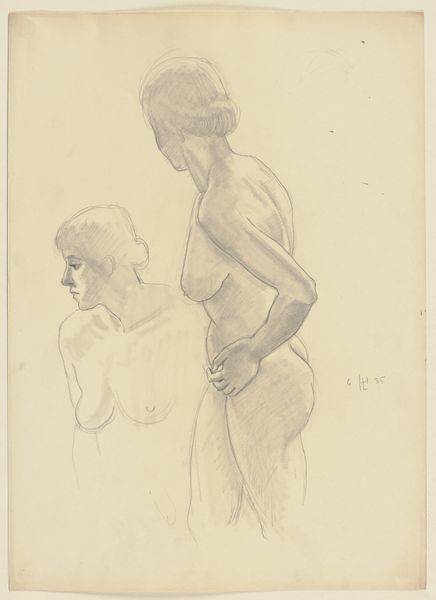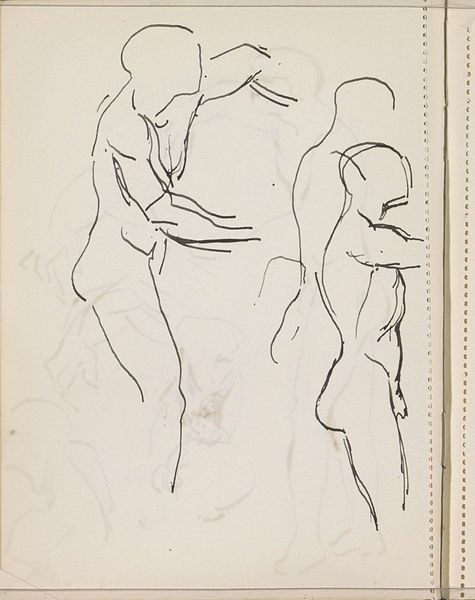
drawing, print, etching, paper
#
pencil drawn
#
drawing
# print
#
etching
#
pencil sketch
#
etching
#
figuration
#
paper
#
symbolism
#
portrait drawing
#
nude
Copyright: National Gallery of Art: CC0 1.0
Curator: Rodin's "Ames du Purgatoire," created in 1893, is a remarkable example of his drawing and printmaking. The work employs etching and pencil on paper to explore a space between the corporeal and the spiritual. Editor: Immediately striking is the fragility of the line work, and the somber, almost ethereal mood it conjures. The pale ground allows the figures to barely emerge. Curator: Absolutely. When viewed through the lens of 19th-century gender dynamics, Rodin’s rendering of the female nude demands a nuanced reading. It departs from traditional representations of women as passive muses, positioning them as figures grappling with intense emotional and psychological realities. Editor: I see that play of light and shadow further emphasizing the corporeality, or lack thereof. Note how Rodin renders their forms using almost imperceptible lines, creating a delicate dance of presence and absence. Curator: Consider, also, the social and political contexts that shaped Rodin’s artistic sensibilities. He emerged from a society undergoing rapid industrialization and urbanization, witnessing significant shifts in social structures, class dynamics, and gender roles. How might such shifts influence his portrayal of vulnerability? Editor: Yet, within that social commentary, he’s using classical techniques, isn’t he? Notice the pyramidal composition—a stable, traditional form given a feeling of instability through the sketchy execution. There is such tension between the traditional and the modern. Curator: Yes, and Rodin pushes boundaries not only aesthetically but conceptually, urging us to examine not only beauty and desire but the implications of trauma. It invites conversations about agency and representation. Editor: It's interesting how even an unfinished study, like this, still holds such emotive power through the artist's masterful manipulation of line. The visible pentimenti—the traces of earlier lines—add depth. Curator: Indeed. By exploring Rodin's use of media and portrayal of bodies, we deepen our engagement with urgent questions about history, society, and representation. Editor: The expressive possibilities contained within something seemingly so simple are really quite profound. It underscores how much can be said with relatively very little.
Comments
No comments
Be the first to comment and join the conversation on the ultimate creative platform.
